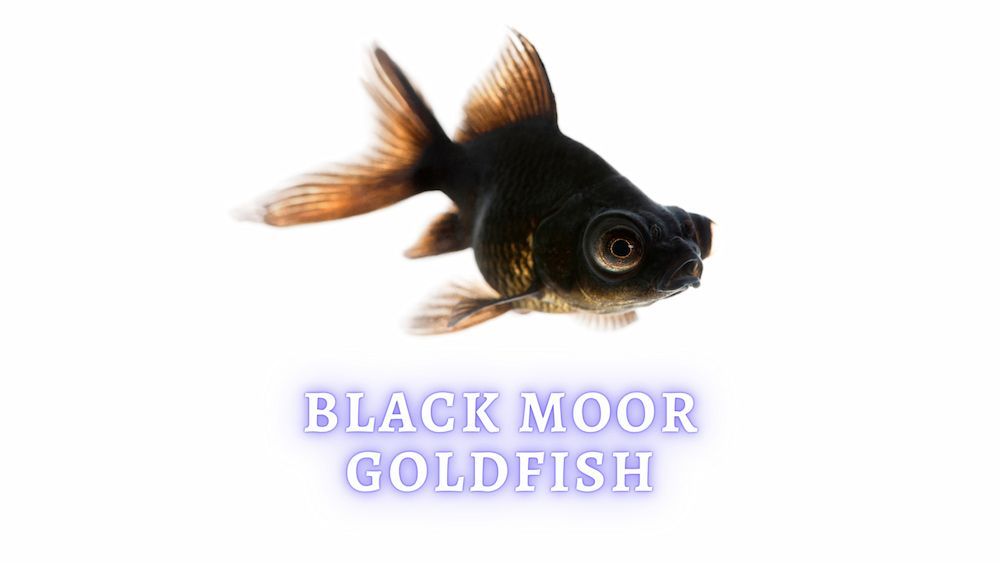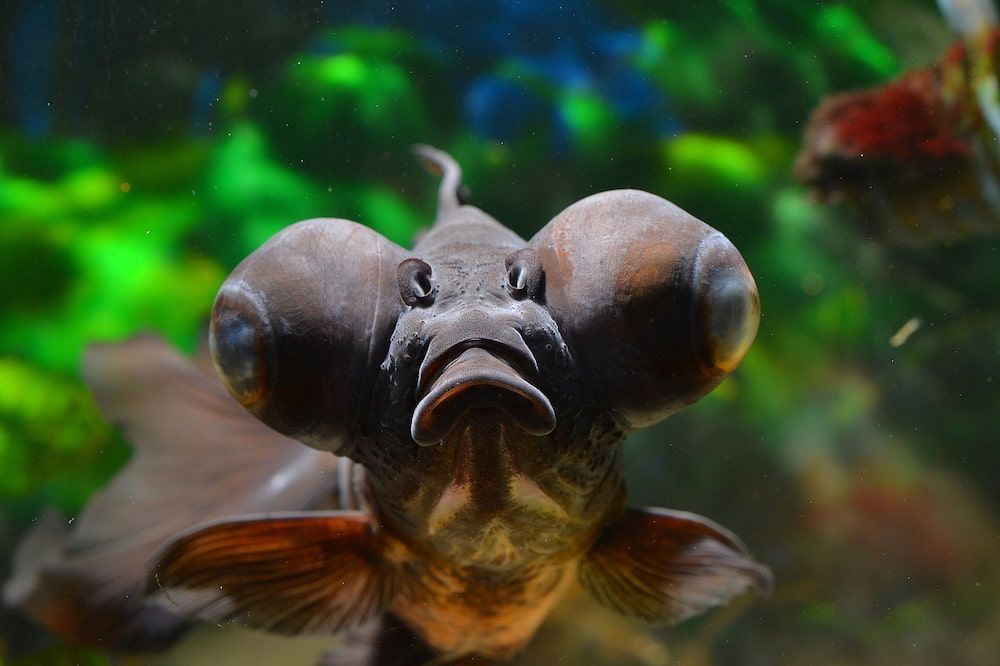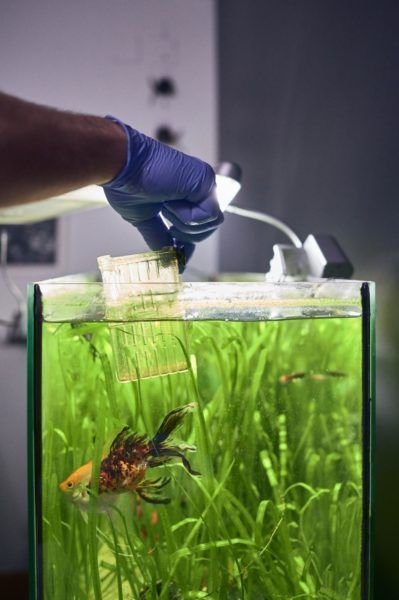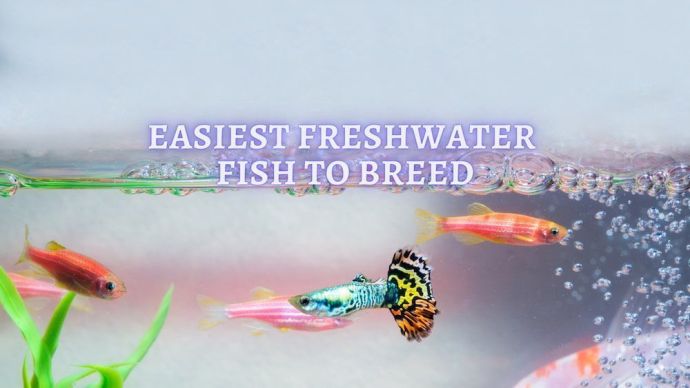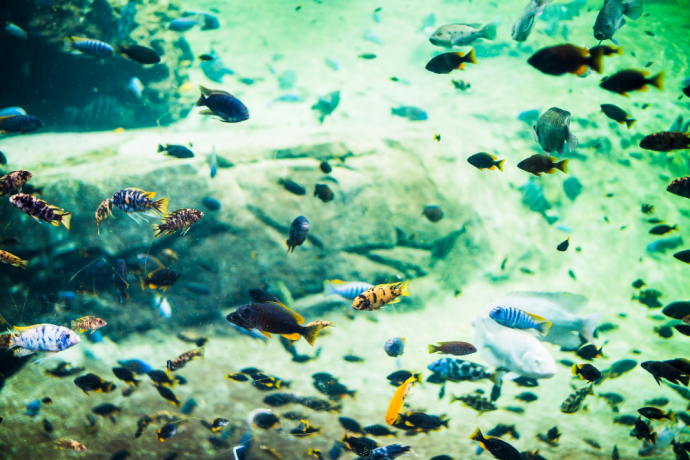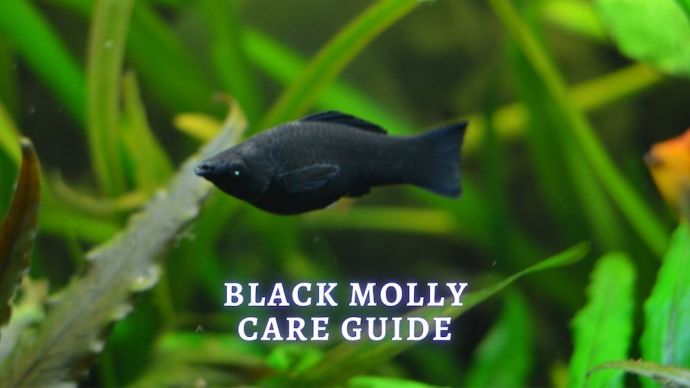A Guide to the Black Moor Goldfish: Tank Setup, Temperatures and Care Routine
Written by:
Author: Seb Jenkins
Seb is a professional SEO writer with a degree in Journalism, he has five years of experience in writing and editing. Seb specializes in topics like dog and cat breeds, aquarium guides, and pet care. He is passionate about educating and entertaining animal owners worldwide. In his spare time, Seb enjoys writing fiction novels.
View all 83 articlesLearn about our editorial process and veterinary review board.
Viewed: 136
Updated on: 06/08/2023
If you want a new fish to add to your aquarium, you have come to the right place! And we can certainly understand why you are researching the Black Moor Goldfish, thanks to their beautiful contrasting and peaceful qualities. Before introducing a new fish to your tank, it is essential to know exactly what they need from you to live a healthy life, especially if you already have fish in the aquarium. Fortunately, we have compiled an all-you-need-to-know guide on Black Moor Goldfish to help you make that decision!
The Basics of a Black Moor Goldfish
The Black Moor Goldfish is also called a Dragon Eye Goldfish and a Black Peony Goldfish. Let’s look at the basics of that Black Moor Goldfish, including its origin story, lifespan, and appearance.
Origin
Like all species of goldfish, the Black Moor Goldfish cannot be found in the wild because it was entirely man-made. The closest wild fish cousin would be the Silver Prussian Carp, found in Central Asia, particularly in Siberia. They prefer to swim and live in low-current areas, so ponds, lakes, and calm rivers. They usually eat a diet of algae, tiny crustaceans, plant matter, and insect larvae.
In the 1500s, carp were kept by Chinese Buddhist monks in ponds before a genetic mutation added a splash of color to some of them. The monks kept these as decorative fish, and selective breeding through the years allowed for many different colors of carp. This is where we first saw the true ancestors of the modern-day goldfish.
In the 1600s, these goldfish were traded to Europe and, 200 years later, to the United States, often used as decorative fish for ponds. Fast forward to today, and there are around 125 different breeds of goldfish, most of which were first created by breeders back in Asia.
Appearance and Size
The Black Moor Goldfish is known to be a rather fancy breed, with long, flowing black fins, veil tails, and an egg-shaped body. You can spot a Black Moor Goldfish from a mile away, from its black, metallic body and the huge eyes that protrude from its head. It’s a distinctive look, but the Black Moor Goldfish wears it well. As the name suggests, this species of goldfish only comes in one color, black.
The Black Moor Goldfish usually grows to around seven or eight inches once they enter adulthood. Buying a young Black Moor Goldfish at a store may look more bronze than black, and their eyes will be far flatter than bulbous. Their scales darken to the trademark black as they grow, and their eyes protrude more. Older Black Moor Goldfish sometimes see their scales fade to gray, while others may turn a little orange if the water is too warm.
Lifespan
The Black Moor Goldfish is a pretty tough fish, all things considered. They often live between 10 and 15 years, so if you buy a young Black Moor Goldfish or hatch one yourself, you can count on them being a family member for over a decade. Of course, this all depends on you providing them with a healthy diet and environment in which to live.
Healthy vs Sick Checklist
There are a few potential health problems to keep an eye out for in the Black Moor Goldfish:
- Eye injury from bumping into things around the tank
- Cloudy eye caused by bacteria, bad nutrition, bad water quality, or trauma
- Swim bladder disease
- White spot disease
- Bacterial infection
- Flukes – external parasites
Tank Size and Environment
As we explained above, the Black Moor Goldfish can grow to around seven or eight inches in length and grow fast during those first two years. So, it would be best to remember this when choosing your tank or to decide how many Black Moor Goldfish you can house within your current aquarium.
If you want to keep multiple Black Moor Goldfish, perhaps alongside some other species, we recommend starting with a 20-gallon tank. The ideal situation is buying a tank you never need to upsize. However, if you only want to house a few fish, then a 10-gallon tank can do the job.
Believe it or not, the Black Moor Goldfish is not a good swimmer. Therefore, you should opt for a standard rectangular tank that offers wide, open space. These tanks also have a large surface area, which is good for fish using up much oxygen like the Black Moor Goldfish. You need a tank that ensures it is easy for your fish to swim to the surface for food; otherwise, it can have a negative impact on their health.
If you can invest in a lid or cover for your tank, that is optimal. This cuts down on evaporation and dust finding its way onto the surface of the water. Clean water with minimal evaporation makes for healthy fish, and it also removes the chances of any fish attempting flight out the top of the tank or any cats taking a dip with their paws.
Light: Natural and Artificial
Black Moor Goldfish can’t see very well, so although tank lighting is not needed, it can help to give them some light to help them swim around. If you have tank lighting, replicate a normal day and night pattern. This is because the Black Moor Goldfish knows when to eat based on the light – breakfast when the sun rises and sleep time when the sun sets. Upsetting that schedule can cause stress and health issues.
Tank lighting also has selfish intentions – you want to look at your beautiful fish! You can purchase lighting with an in-built timer, so the lights switch on and off at set times, even when you are not around.
Tank Mates
Fortunately, the Black Moor Goldfish loves living in large groups because it’s generally a peaceful fish breed. However, we still recommend keeping them with other Fancy breeds of goldfish. Fancy fish have similar eating habits and complement each other well, whereas other faster goldfish species can create a bit of a frenzy at feeding time. With the Black Moor Goldfish’s bulbous eyes, this can cause injury. Putting very small fish or shrimp in the tank is also not a good idea, as the Black Moor Goldfish will likely eat them. If you want variety, instead look at large shrimp and non-plant-eating snails.
Plants, Hideouts, and Decorations
Investing in living plants is a great way to enrich your aquarium, especially with a fish like the Black Moor Goldfish that uses up a lot of oxygen. The plants add extra oxygen to the water while eliminating carbon dioxide and nitrates. Living plants equal healthy fish.
That being said, Black Moor Goldfish do like to munch away at the young leaves on plant life and can uproot plants if they are not secured. Therefore, we recommend plants like Anubias, Java Fern, and Marimo Moss Balls to remove these risks.
Because the Black Moor Goldfish does not exist in the wild, you can choose whatever décor you want really. However, there are still some health and safety matters to consider. If the tank is busy and cluttered, the Black Moor Goldfish may bump into things and injure its eyes. Leave them with lots of open space, and try to put decorations around the sides. Avoid any decorations, rocks, or driftwood with sharp edges.
READ MORE: TOP-10 Plants for Goldfish
Water Temperature and Quality
The best temperature range is between 65 and 72 degrees Fahrenheit. The pH should be between 6.0 and 8.0, with a water hardness of between 5 and 19 dGH. Nitrate levels should be below 20 ppm, without any nitrite or ammonia. You should check the water temperature and quality once per week.
Filter
Despite looking so classy, goldfish are dirty animals and produce a lot of waste. As such, you need a filter that matches your Black Moor Goldfish tank. The water in your tank should be circled around at least four times per hour, with mechanical and biological filters to eliminate toxins and solid waste. You do not need a chemical filter, but it can help. Just remember to remove the chemical filter if you need to give the fish any medication in the water. Remember, the Black Moor Goldfish likes to swim in calm waters, so strong currents are a no-no. Go for a filter with an adjustable flow, or use plants as a buffer.
RELATED: How to Lower Ph in a Fish Tank?
Habitat Care, Cleaning, and Maintenance
Your tank needs to be well-maintained and cleaned in order to promote good fish health. You should change 30% of the water once per week and remove all waste using an aquarium vacuum cleaner. Using a special scraping tool, you should also remove dead or damaged leaves using aquarium scissors and scrape away algae from the tank. Feel free to leave some at the back of the tank for the fish to eat.
Substrate
Large, smooth gravel is the best substrate to use because the Black Moor Goldfish loves to explore and search through it for food.
Food and Feeding
Black Moor Goldfish have a wide and diverse diet, including meat and plant life as they are omnivores. We recommend developing a high-quality diet that includes meat proteins like bloodworms and krill, as well as Fancy pellets, and a treat of lettuce or zucchini every now and then.
Even though pond goldfish eat insects, larvae, and crustaceans, we do not recommend putting any live food into the tank as they can come with bacteria or parasites.
Overfeeding
When you feed a Black Moor Goldfish too much, especially with dry food, they can bloat and become constipated. You can solve this by giving them a little meat protein or vegetables to get them moving again.
You should look to feed your Black Moor Goldfish two or three times a day, but only small meals. The general idea is that they should be able to eat all the food up in two or three minutes.
Spawning Conditions
Black Moor Goldfish are pretty easy to breed in your tank as long as you provide the correct conditions. You need at least five Black Moor Goldfish to give yourself a good chance of having both males and females. You can’t really tell them apart when they are not in breeding season, but the females have rounder bodies when they are carrying eggs.
In order to breed your Black Moor Goldfish, you will need to create a spawning tank which needs to be at least 20 gallons. The tank needs to have big, flat rocks for the females to lay their eggs on, as well as some comfy plants. Feed your Black Moor Goldfish a lot of protein before introducing them to the spawning tank, and keep that high-quality, high-protein diet going while they mate.
Black Moor Goldfish like to mate in the spring, and you can mimic this in the spawning tank by increasing the temperature by a few degrees Fahrenheit every day until you hit between 68 and 74. Change 20% of the water per day until they start spawning and remove any visible waste or leftover food.
Female Black Moor Goldfish can lay as many as 10,000 eggs in a period of three hours or so, which the males then fertilize. Once they are fertilized, take the adults away before they eat them. The eggs should hatch after around a week, and you should feed them on specific fry food. You can put them in the main tank when they grow to around an inch in length.
Frequently Asked Questions:
Can black moor goldfish live with other fish?
The Black Moor Goldfish can live with other fish as they are generally very peaceful. However, we recommend only keeping them with other Fancy goldfish breeds for safety.
What does a black moor goldfish eat?
We recommend developing a high-quality diet that includes meat proteins like bloodworms and krill, as well as Fancy pellets and a treat of lettuce or zucchini every now and then.
How much does a Black Moor Goldfish cost?
The Black Moor Goldfish is a pretty common fish to buy, and most fish stores or pet stores will be stocked. If you are looking for a more unique or special Black Moor Goldfish, you can search online for those with fancy tails, for example. In most fish stores, they will not cost you more than around $8, but it depends on their age, size, and quality.
How big should the aquarium be for the Black Moor Goldfish?
We recommend a tank of around 20 gallons to ensure you don’t have to upsize later, although 10-gallon tanks are okay for smaller groups.
How Often Should You Clean A Black Moor Goldfish’s Tank?
You should change 30% of the water, scrape away algae, cut away dead/damaged plant life using aquarium scissors, and get rid of waste using an aquarium vacuum once per week.
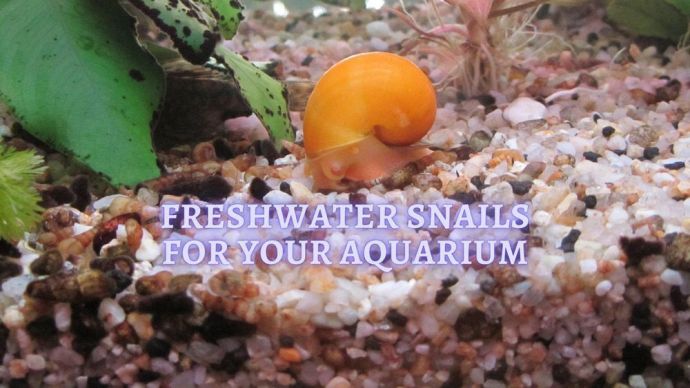 Fish Owners Tips Types of Freshwater Snails: Exotic cleaners for your Fish Tank
Fish Owners Tips Types of Freshwater Snails: Exotic cleaners for your Fish Tank - 1704
- 0
 Freshwater Fish The Best Freshwater Aquarium Fish: TOP-15 Freshwater Fish for Fish Tanks
Freshwater Fish The Best Freshwater Aquarium Fish: TOP-15 Freshwater Fish for Fish Tanks - 232
- 0









